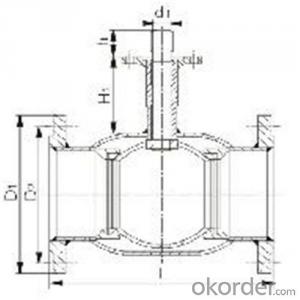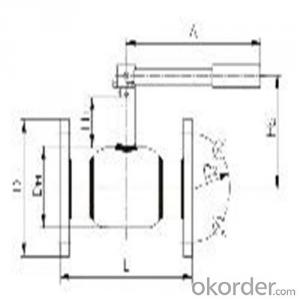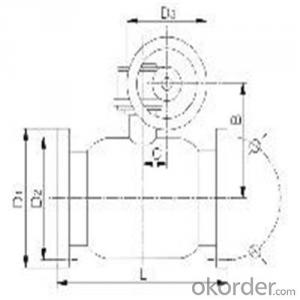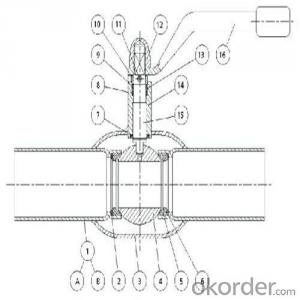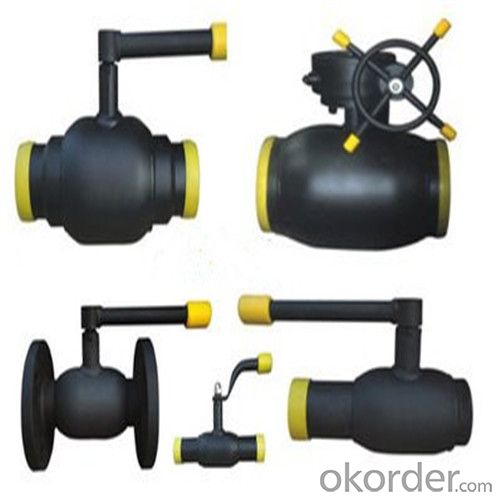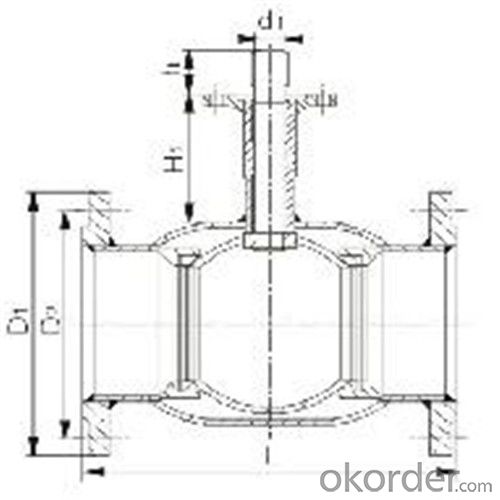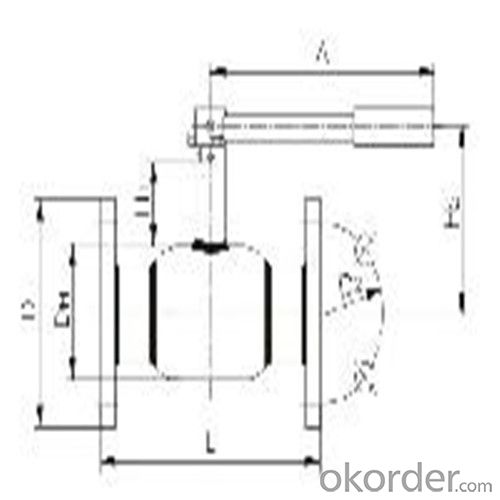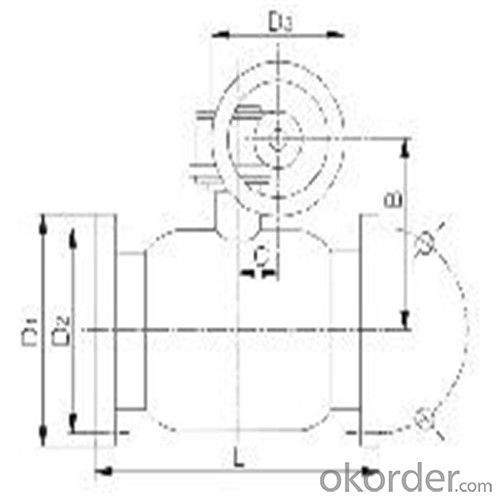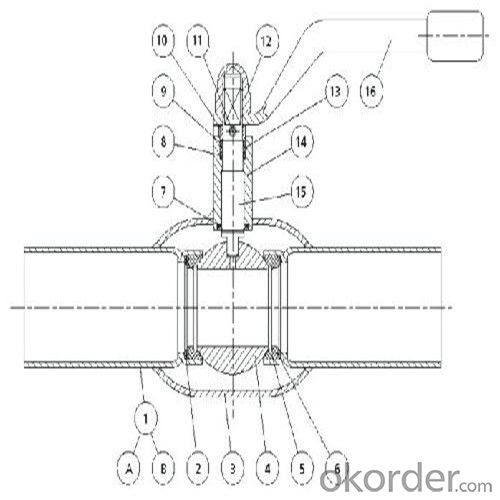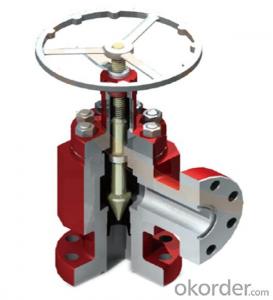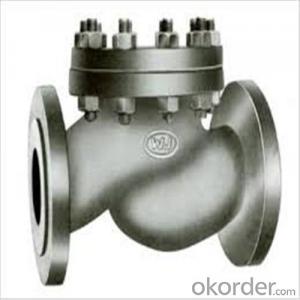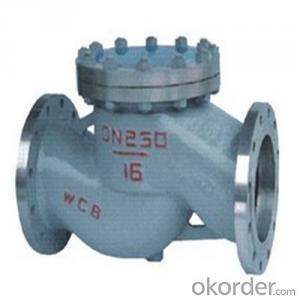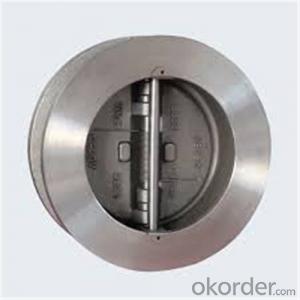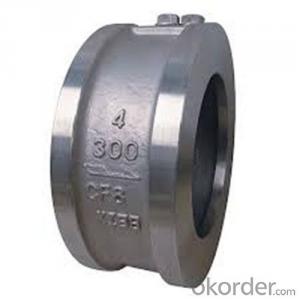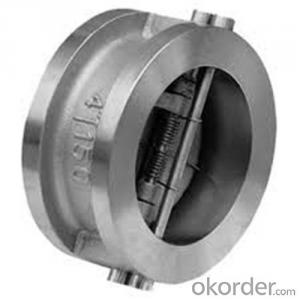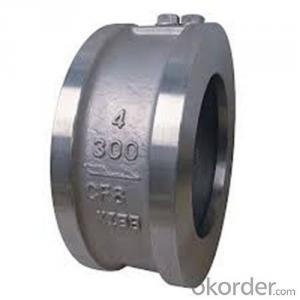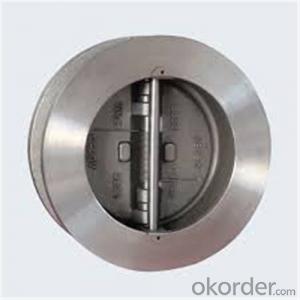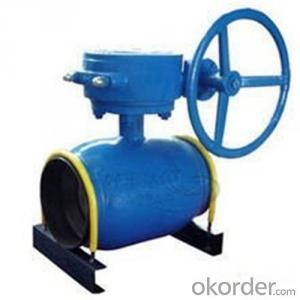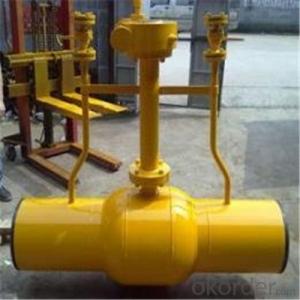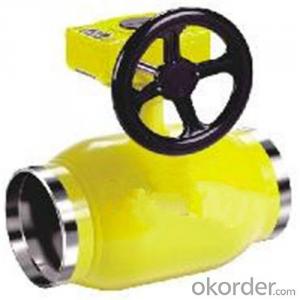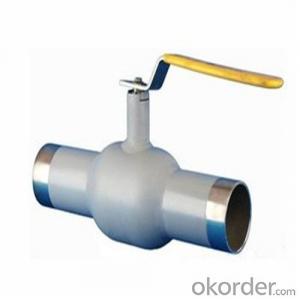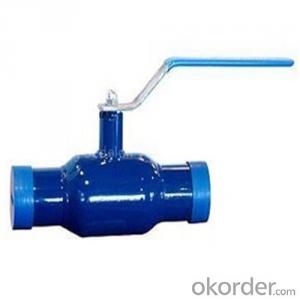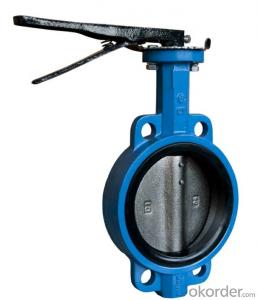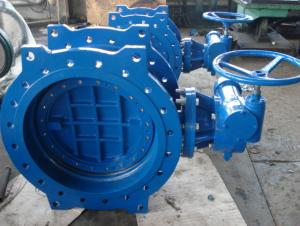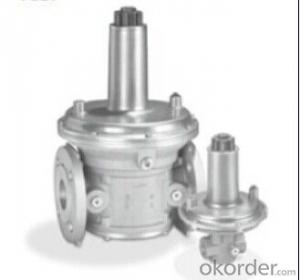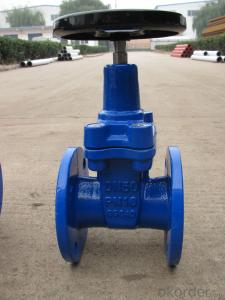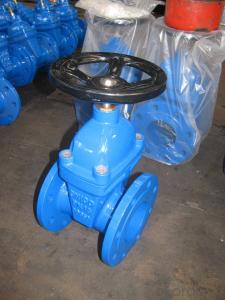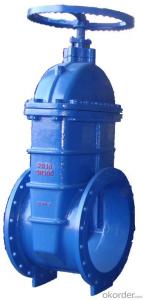Ball Valve For Heating SupplyDN 200 mm high-performance
- Loading Port:
- Shanghai
- Payment Terms:
- TT OR LC
- Min Order Qty:
- 100 pc
- Supply Capability:
- 1000 pc/month
OKorder Service Pledge
OKorder Financial Service
You Might Also Like
Ball Valve For Heating Supply
Product Description of Ball valve for heating supply:
Technical introduction
★The ball valve is designed as fully welded structure,which can prevent the leakage of medium.
★The valve seat is floating and spring-loade.The seal is made of soft seal materials of PTFE+20%C and Viton B.The seat is tightly abutted against the ball surface by the pressure of a spring,so that even if the media is in low pressure,a reliable sealing can be assured for the ball valve.Double piston effect and double seal(two-seal seat)are adopted in specially designed valve seat to realize double sealing,which makes the tightness of the ball valve more advantageous and the operation easier.
★A floating ball is adopted for DN15-DN200,and a stem and trunnion ball is adopted for DN200 and above,which can ensure the accurate position of different size ball.In other words,the sealing performance,low torque valve and operability can be guaranteed.
★The sealing of the stem is fulfilled by two replaceable O-rings and packing consisting of PTEE+20%C or flexible graphite,as the packing seal material,is fire proof effect,and is specially suitable for fuel gas systems.
★The materials used for the valve body and pipelines are the same(carbon steel or SS steel),valve body and stem adopt SS steel and the packing adopts PTEE+20%C which is corrosion-resistance or flexible graphite.
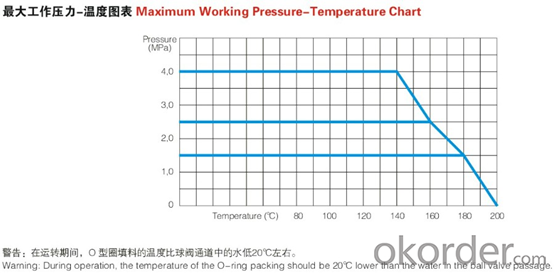
Design Features of Ball valve for heating supply:
Features and Applications
Raymond's fully welded ball valve for heating supplyand Fuel Gas systemare used to control the flow at fully open or closed position,not regulate the flow.Only special types of ball valves can realize the flow regulation.Therefore,our welded ball valves can satisfy the requirements of heating systems,e.g:
★Main pipelines of heating equipment
★Cross channels of heating pipes
★Heat exchanger station and any long distance operating station,e.g:
For the transmission of hot water and two kinds of mixed media(water,air or natural gas),limited to Max.4.0MPa and 200°C.
For the transmission of natural gas and one medium,from -30°C to 60°C,and even up to 150°C using specially designed ball valves.
★Coal gas pipelines,trunk and the branch supply lines.
Standard of Ball valve for heating supply:
Actuator | Gear Handwheel customize |
Connection | Flange SW Weld customize |
Medium | Gas Natural gas Water customize |
Medium Temperature | <200< span="">℃ customize |
Application Fields | Electricity Medical Petrochemical customize |
Connection Standard | EN 1092-1 EN 12627 ISO 7-1 customize |
FAQ of Ball valve for heating supply:
Q1:I can’t find the type of steel check valve which I need. what can I do?
The chart above only lists out some common composition of steel check valve parts.We may provide other different parts material composition according to the customer's request or the actual valve working condition.
Q2:Which certification do your products pass?
Our products are in accordance with ISO 9001、ISO 14001、API 6A、API 6D、TS CE、API607/6FA/BS6755.
Q3:How can I place an order?
The only one thing you should do is to tell us the sepecification about type 、quantity and mode of transportation, then we will send you quotation within 24 hours.
- Q: I have a stainless valve I want to install in a copper domestic water line. My concern is: are the two metals compatible? Are stainless steel and galvanized steel compatible?
- Yes they are compatible. It's common to have underground galvanized service water lines (from the main to the house) connecting to a house main shut off connection which then leads to full copper in the house.
- Q: Someone explained on chevy that valve guide clearance can limit lift.
- Valve guide clearance is distance between the valve stem and the valve stem guide. It is critical for proper engine operation.
- Q: Hello all,I have a1990,BMW 525i.I bought this car from another guy about year back and drive around 13000 kms.1.Do i need to adjust the valves(both inlet and outlet).2What is the importance of valve adjustment3Does it affect the mileage4.As a regular maintenance for how many kms can i drive without valve adjustmentExpecting your valuable replies.
- Valve adjustments are something nobody does anymore. It really is important to do to, especially if your car is older. If your valves are adjusted to tight, you can wind up with burnt valves, too much clearance and it can quickly wear out the valvetrain. BMW reccomends inspecting valve adjustment every 24,000 kilometers. You may be able to do 30,000 Maybe more than that but I personally wouldnt. It will effect mileage a noticable amout, and your car can lose power if it has too many burnt valves. If a valve is burnt it isnt seating properly and you arent getting a fully sealed combustion chamber. It is a fairly easy maintence that you can do yourself. You need a feeler gauge to check the valve lash. you will need to remove your valve covers, (you might as well replace your valve cover gaskets lest they get leaky) and find top dead center for each cylinder as you can only check valve lash at TDC. You will need a shop manual it will tell you what the measurements should be, and give a step by step method to checking your valves. If that sounds like too much work, just take it to a BMW dealer. To those of you that think that you can let it go until it makes noise.... The idea is to keep it from getting to that point. It is a relatively easy thing to do.
- Q: Exhaust valve opening (EVO)Intake valve opening (IVO)
- HI You answered it your self... exhaust valve opening (EVO) is when the exhaust valve opens.. and the same for the intake (IVO).. When the EVO happens the motor pushes the exhaust (burnt fuel) out of the motor when the IVO happens it sucks gas into the motor to get burned and make power.. Exampe of a 4 strock motor. 1) piston goes down , sucking in air and fuel (IVO) 2) piston goes up compressing the air and fuel spark plug fires ignighting the fuel 3) piston goes down turning the crank powering the car from the explosion of Fuel. 4) piston goes back up pushing the spent fuel out. (EVO) then repeats. On a 4 cylinder car this happens 4 different times on an 8 cylinder car 8 different times and on 6 cylinder car 6 different times. When one cylender is firing another well be coming up to push out its spent fuel and another well be going down drawing in fuel and so forth.. good luck tim EDIT IVC = intake valve closes EVC= exhaust valve closes
- Q: i recently had a new condensing boiler and water cylinder replaced the existing radiators all have thermostatic valves fitted to them and worked fine until the boiler was replaced now all of my radiators when turned on, get as hot as the radiator without the valve on, i put each valve on number 2 which should be slightly warm, instead they are very very hot to the point you cant hold your hand on them for long one of the bedroom radiators can be heard bubbling like a kettle, i find it hard to believe all the valves could suddenly develop a fault could there be another reason for this ie fault with the fitting of pipework i am really concerned as we have young children in the house any thoughts on this much would be much appreciated
- I think you might be confusing a thermostatic mixing valve with a thermostatic on/off valve. The thermostatic valves on radiators are on/off valves. They don't control the temperature of the water, they just shut the radiators on or off when the room temperature goes below or above a certain point. The radiators with thermostatic valves *should* get as hot as the radiators without (at least until the room heats up). I'm guessing your new boiler is set to heat the water to a higher temperature than the old boiler.
- Q: I have a 4 diameter column of water 10' tall (filled with water). I need to find a flush valve unit to fit into the bottom of it so that it will flush all of the water out of the column in 1 flush. Essentially this will act as a large toilet but it is for a design project at school. My concerns are that the flapper will close before the water is completely flushed out of the column. Is there any way I can make the flapper stay open thus flushing all the water in column out without holding the chain connecting the float to the flapper valve?
- This is an interesting problem. I suggest you study the action of a toilet flush mechanism. Don't have the flapper on the outside, have it on the inside at the bottom of the column, in a small chamber. Use a flapper of very light material, such as a ping-pong ball, which will float on almost no water. (You don't say how fast the column has to drain.) A thought just occured - if the flapper were actually a floating ball, you could pull it up from above, and it would rise to the surface, then follow the water level down, and close it when empty with only a trace of water remaining. I can think of no simpler way to accomplish this challange. Good luck with the project.
- Q: this valve used in the refinery.
- This is a 'Trip and Throttle' (T T) valve that is maintained in a 'Fully Open' postion during normal turbine operation. It is maintained open by a Hydraulic Control system that, should any of many shutdown conditions occur, the hydraulic oil will be dumped to its reservoir by the operation of a Solenoid valve, actuated by the shutdown signal, and the T T valve will immediately close, stopping the steam flow to the turbine speed control steam chest in a safe manner. The valve handwheel is then operated to ensure that the valve remains fully closed until the system is ready for re-start. The valve cannot be opened again until the shutdown condition has been rectified and the hydraulic system reset to restore the oil pressure to the valve. The valve however, can then only be re-opened manually and slowly until the turbine is brought to the 'Minimum Speed Control' Governor setting. When settled down at this condition and the steam chest valves are under the control of the Governor, the T T valve is swung wide open. This latches the valve in the fully open position until another shut down occurs,
- Q: How do I know if the valve seals need replacing? From what type of smoke can I detect?
- A leak down test won't tell you anything about the valve stem seal. It will about the actual valve face sealing in the valve seat, but the valve is closed when performing a leak down test. The best way to diagnose worn valve stem seals is if you get a lot of oil smoke onstart up, but it goes away in a few minutes. A real giveaway on bikes is after the bike has set on the side stand overnight and when you fire it up, you get more oil smoke out of the left side muffler than on the right side muffler. That's because the oil in the valve area runs to the left side when parked on the side stand.
- Q: here's some additional info asking of my question...I plan on buy a BLOWOFF VALVE and woundering where does the BLOWOFF VALVE goes in my car or do i have to replace with stock EGR VALVE using same hoses or help me please don't wanna screw this one up
- A blowoff valve is used in high-powered turbocharged engines. It allows for compressed intake air to be vented out to the atmosphere to reduce turbo lag that occurs due to excessive pressure buildup. It's not necessary for factory turbocharged engines, but if you have designed your own system you may want to add one. If you are unfamiliar with how turbocharging works - other than it makes your car go vrooom - then I highly suggest you take the car to a speed shop and have them analyse the car to determine whether you even need a BOV.
- Q: Hi, this is a part 2 question to the one I posted last night. After turning the water shut off valve on my toilet back on, it didnt start to hammer till about 1 min pasted. When the hammering is happening I look in the toilet tank and see air bubbles coming out of the base of the fill valve and the water coming out of the fill tube isn't smooth and flowing its kinda step wise/ in intervals. I forgot to mention that I live in an apartment, does this affect anything?My official question is, is this an air bubble problem or is it a rubber gasket/ rubber seat problem?This is a new building only about 2 yrs old, so parts can't be that bad right?
- Air in lines. Leave valve on and push float down manually til it runs smooth.
Send your message to us
Ball Valve For Heating SupplyDN 200 mm high-performance
- Loading Port:
- Shanghai
- Payment Terms:
- TT OR LC
- Min Order Qty:
- 100 pc
- Supply Capability:
- 1000 pc/month
OKorder Service Pledge
OKorder Financial Service
Similar products
Hot products
Hot Searches
Related keywords

